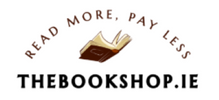Product Description
interview by Felicity Woolf; intro by the artist
ISBN 978 0946641 239 32 pages (paperback) 20x15cm 22 illus
Mary Fitzgerald’s interest in addressing aspects of Eastern and Western culture informs her work. In this book she discusses the language of abstraction, the communication process between the artist and viewer, the impact a serious accident (and her recovery) had on her work, and how feminism influences some of her ideas.
EXTRACTS
"Abstraction for me is the language of potential. As my work is an on-going process of investigation and not the presentation of a set of fixed conclusions, it seems natural to choose a means which allows for the greatest set of possibilities. Abstraction is the most significant development in the art of this century and has both a rich and varied tradition from which to draw, and enormous potential for the future. Language is something that has concerned me from the outset. Abstraction allows one to consider the specifics of one’s experience in the context of a universal language. It allows spatial and temporal freedom, an arena for working through experience, and an opportunity to build up many levels of meaning which reveal themselves to the viewer over time. Art is an expression of thought, and one gradually finds a ‘voice’ which articulates your thoughts and emotions. The finished works embody this process but they also have a physical presence. I see my work as a continuum and the nature of the work reflects this. I work in series, in installation format where each piece has a spatial relationship to the others and to the environment it inhabits. In this way the work has a physical relationship to the audience who share the same space; it begins the process of communication with the viewer."
— Mary Fitzgerald in conversation with Felicity Woolf
CONTENTS
ORIENTATION introduction by Mary Fitzgerald
Mary Fitzgerald in conversation with Felicity Woolf
COLOUR PLATES
Orientation 3 1992
Axis III Dark to Light 1985
The Drawing Room 1, White to Yellow 1986
The Drawing Room 2, Yellow to Cerulean Blue 1986
The Drawing Room 3, Cerulean Blue 1986
The Drawing Room 4, Cobalt Blue to Black 1986
The Drawing Room 5, Black to Graphite Grey 1986
Cross Reference 5 1988
Cross Reference 4 1988
Image Afterimage 10 1988
Image Afterimage 17 1988
Counter/act II 1991
Counter/act I 1991
Orientation 1 1992
Drawing in Five Parts 1987
White Painting 1988
Counter II 1989
Interval 3 1989
Counter I 1989
Fraction I 1989
Booklet format, paperback
 Euro
Euro
 British Pound
British Pound










